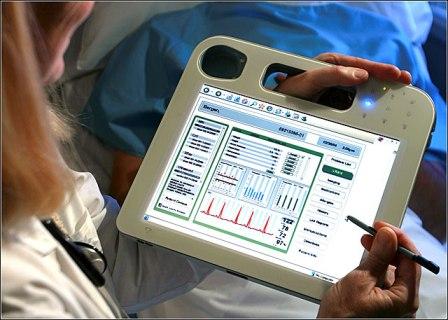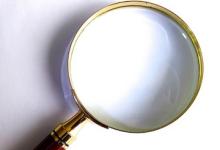The Electronic Medical Record: the Good, the Bad and the Ugly Save
The Electronic Medical Record: the Good, the Bad and the Ugly
Even a Luddite such as myself recognizes the inevitability of the electronic medical record (EMR). While there are certainly many things about the EMR that we may dislike, its implementation is inevitable. Many of us in academic centers, for better and worse, have had more and longer experience with EMRs than some of our colleagues in practice. Also, while some solo practitioners have more than a decade of EMR experience, it is most often with one of the “doctor friendly” formats; not the behemoth, account-centric, bureacrat-approved EMR that we will all likely be using in the future. For what it is worth, here is my take on that type of EMR: the Good, the Bad, and the Ugly aspects.

becoming more commonplace
The Good:
1. Data is available. Perhaps the greatest aspect of the EMR is the availability of the data we constantly need to help manage our patients. With the EMR, clinicians have immediate access to lab results, and results from imaging studies (or even the actual images from the studies themselves).
2. Other doctors’ notes. A chronic issue with the paper medical record was access to other doctors’ notes. Sometimes notes were unavailable, sometimes they were available but not legible.
3. Big data. There is great potential for data from many EMRs to help address important clinical questions, for example, comparative effectiveness of different therapies.
4. e-Prescriptions: The EMR allows prescriptions to be sent directly (and immediately) to the patient’s pharmacy. This minimizes “lost prescriptions”. It also can allow tracking of prescriptions; this can allow doctors to assess, for example, how many times in the past year has the patient actually filled the monthly prescription for the medication that they said they were compliant with. The e-Presciption also can help minimize medication errors related to bad handwriting.
5. The EMR is on the computer. Since you are on the computer, there is easy and immediate access to infinite information. When your patient tells you they are taking a new medication you have never heard of, a few clicks catches you up.
The Bad:
1. Other doctors’ notes: Yes, other doctors’ notes are always available. However, due to the government requirements of the EMR, most of the notes are useless. Have you seen an ER note lately? Typically 20 pages long…with 19 pages of formulaic detritus. Then on page 20, the reason the patient went to the ER: “patient complains of being shot with arrow in head”. Everything is available, but the quality has diminished.
2. Big data: Despite its potential, ‘Big data’ raises many ethical issues. Sure the EMR is a treasure trove of data. But did the patient consent to the use of their personal information? Do they need to? How secure is all this intensely private information?
3. Imported data: The EMR allows for efficiency in creating notes: medications, problem lists, data, and other things can be imported with just a few clicks of the mouse. However, the veracity of the data is always in question. Medication lists must be confirmed with someone… but who checks the actual real true use of medications? In a 15 minute visit, who will take the time to update the importable data? What about the medication list?
4. e-Presciptions: They are convenient, absolutely. But while they reduce errors from some causes (e.g. illegibility) they introduce other errors. Tried to write a tapering dose of prednisone lately? You can write an essay, and you will definitely be called, and it will likely be done wrong.
The Ugly:
1. “Meaningful use”: This is the future of the EMR. Bureacrats will increasingly determine what doctors need to ask about, document, and act upon in their notes. Their intentions are good. For example, smoking is bad for pretty much everyone. So asking every patient, every visit, if they smoke is a good thing. And it only takes “a few clicks” of the mouse. But there are so many “important questions”; pretty soon, the entire 15 minute office visit could be consumed with “meaningful” questions. Bureacrats do best what bureacrats do best: create meaningless activities.
2. Personal interactions: Patients mostly hate the EMR. Why? Because in most situations the doctor is staring at the computer, not at them. This is not due to poor typing skills by the doctor; the bureacrats who select the EMR pick systems that require navigating across different “fields”, requiring the doctor to stare at the screen for much of the time.
3. Patient access to their chart: Another great idea in theory that has gone horribly wrong in practice. Patients looking at their lab tests online? This sounds fine, and is something good. There are some other good uses of this aspect of the EMR, such as patients requesting a medication refill, or to order laboratory tests that are indicated. But who uses this ‘patient portal’ the most? The patient who used to call the office every day, now uses the EMR as an ersatz Facebook page. “Doctor…my eyelashes are itchy; could it be the medicine you prescribed 8 months ago”. Indeed… by counting the ratio of actual office visits to patient-chart inquiries, you know a great deal about what type of patient you will see, even before your first visit. Like everything with the EMR, the bureacrats will say “it only takes a few clicks”; but those clicks and the time accrue.







